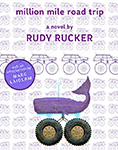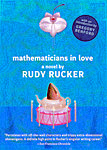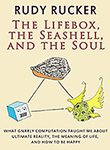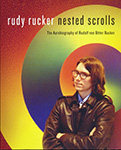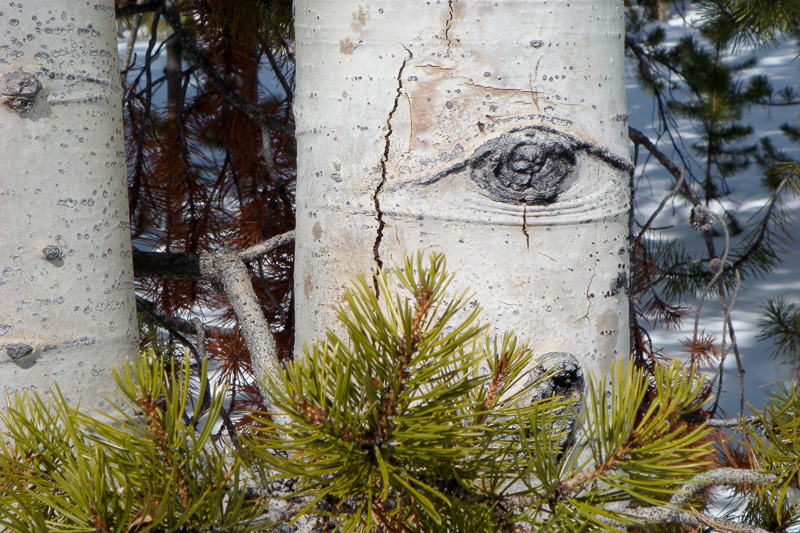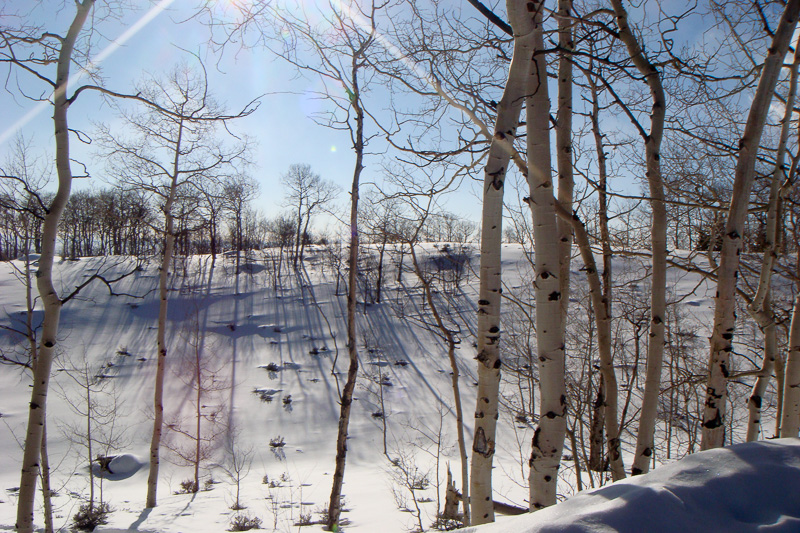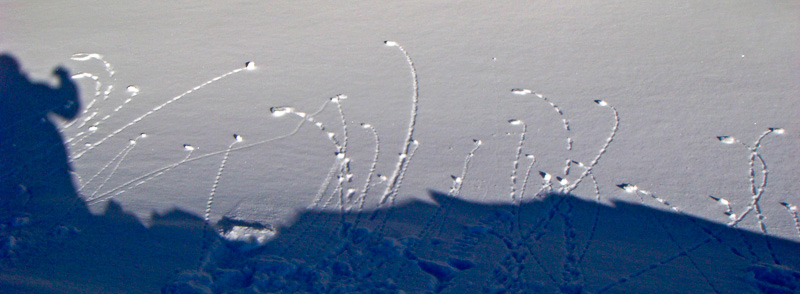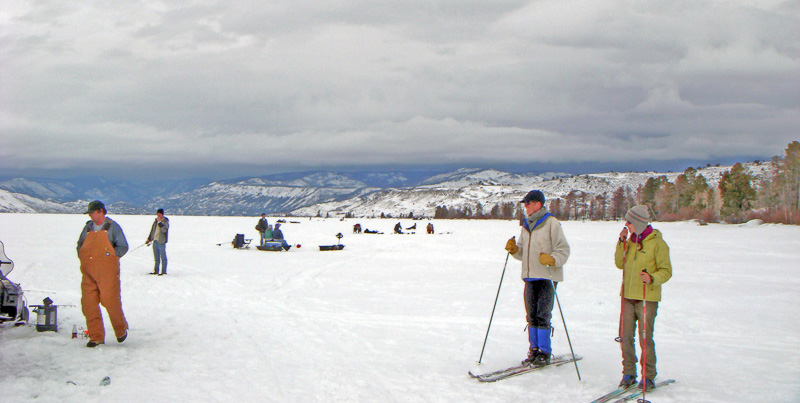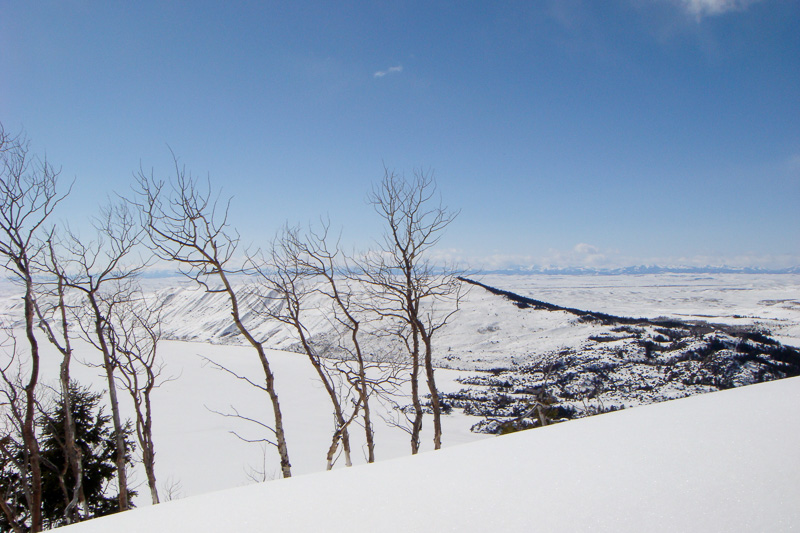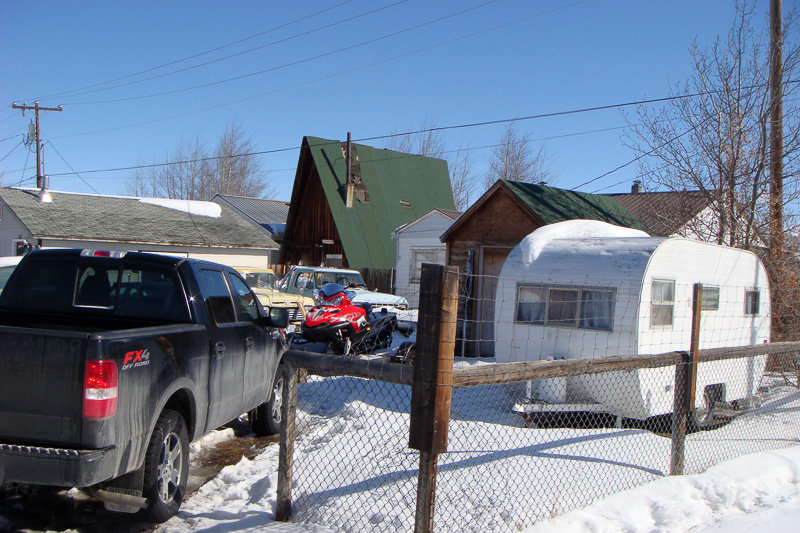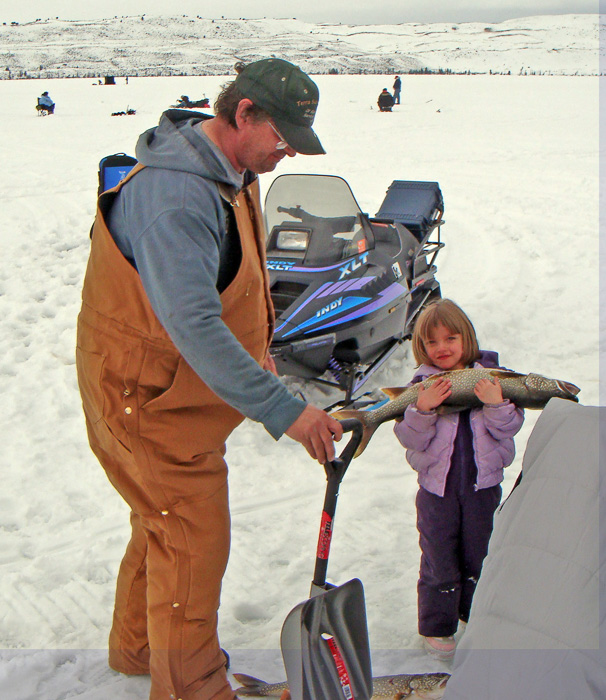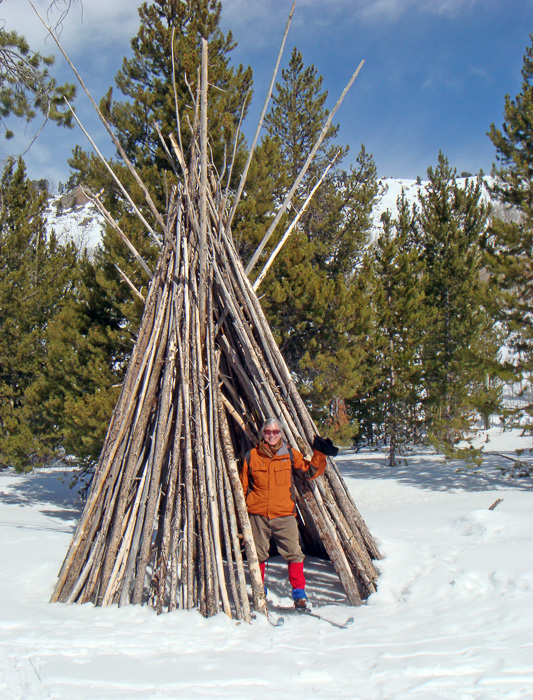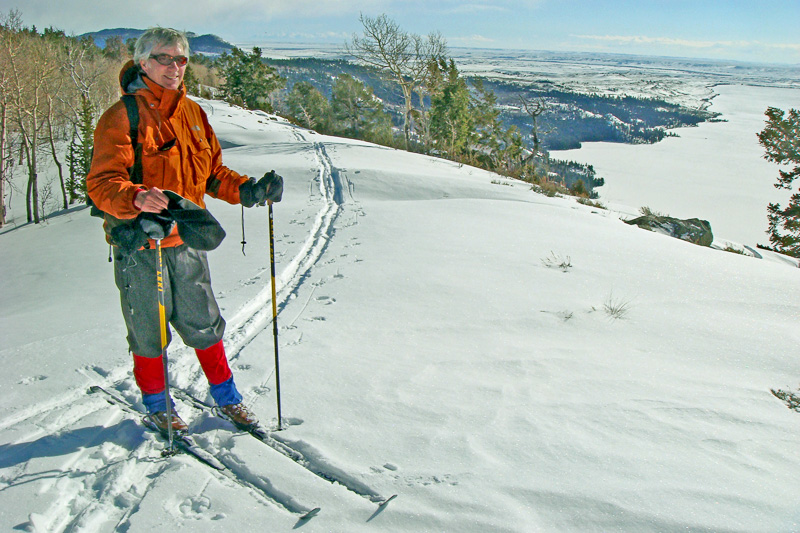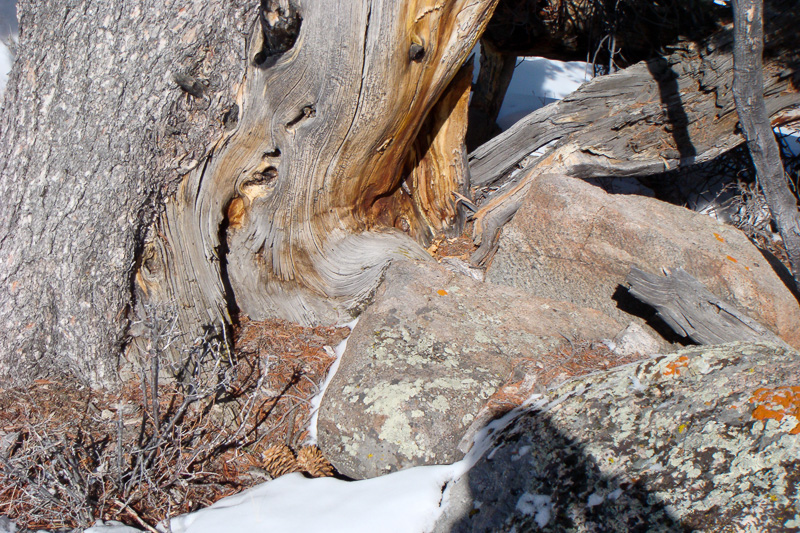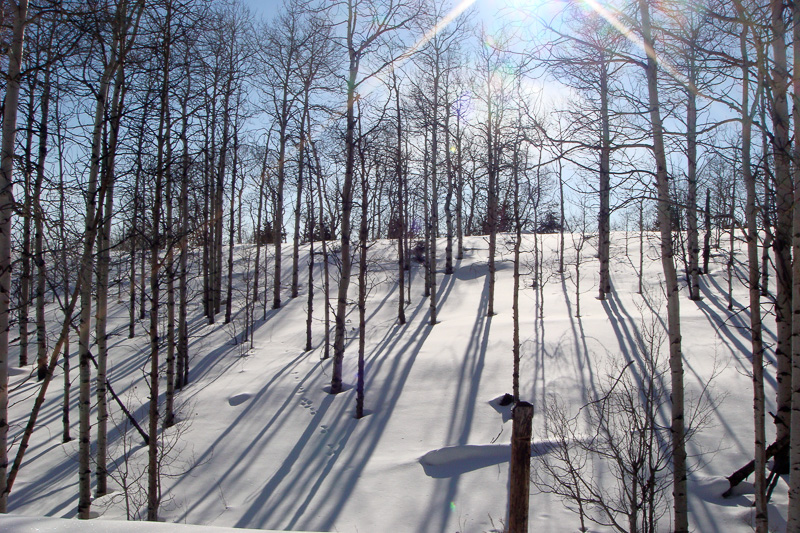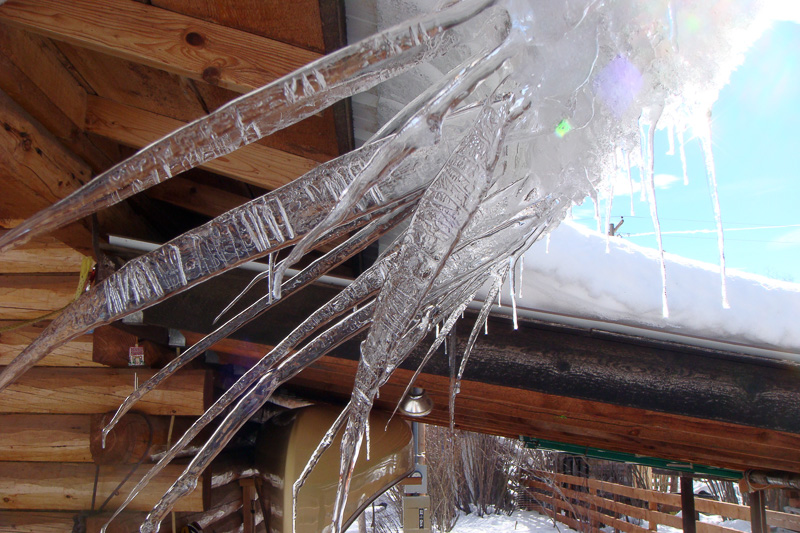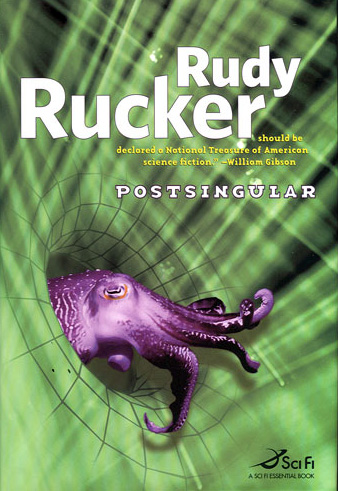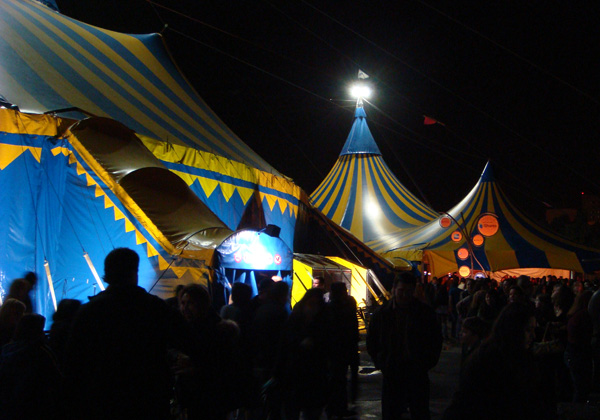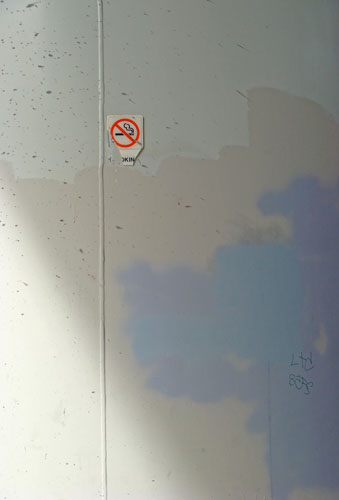Wow! Thanks, all, for the responses to my blog post, “Fundamental Limits to Virtual Reality”, on the subject of RR (real reality) vs. VR (virtual reality).
I think that’s the most comments I’ve ever gotten on a single post, and they’re still trickling in. It’s nice to know that there I do have readers out there in RR, even if you don’t always agree with me. And it helped that BoingBoing mentioned my post.
I’m not exactly “against the singularity.” It’s rather that I’m against one particular postsingular notion, that is, the idea of grinding up Earth to make a VR Vearth. If I have any beef with the singularity it’s simply with how rapidly the public discussion of it has narrowed down to a very few ideas that are already cliches. And that’s what I’m trying to shake free from in my Postsingular series. Being a Hegelian, I like to leapfrog discussions, moving to the next idea down the line.
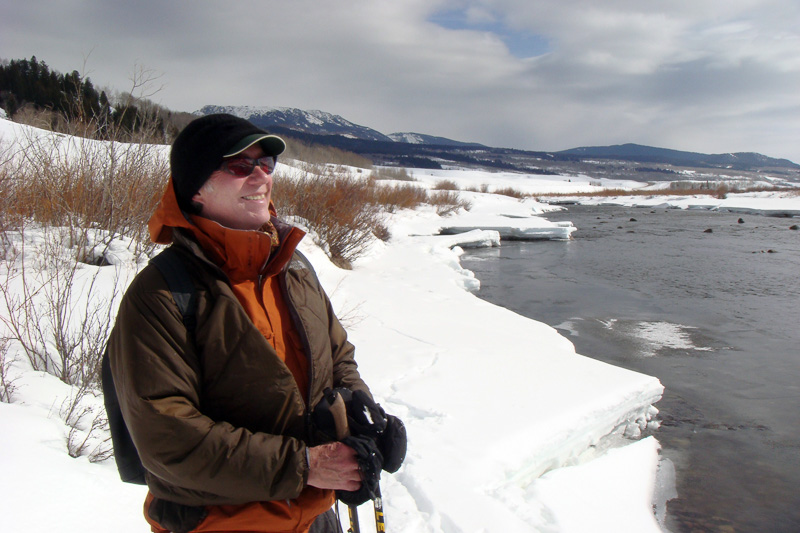
I’ll post some more pictures from the Pinedale, Wyoming, environs today, along with some back-atchas. I wrote this up somewhat hastily, so I apologize to those I left out, and to those whom I’ve misquoted or misinterpreted.
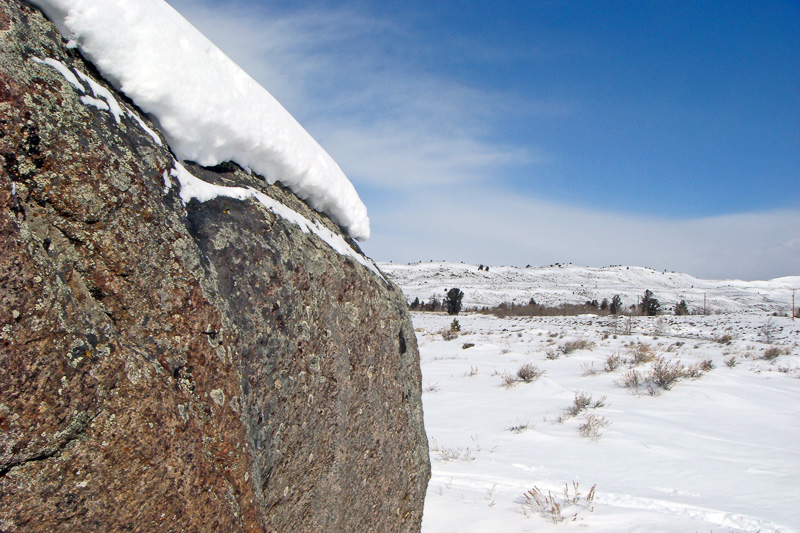
Jeff Saltzman : “Still, virtual realities are very real, they just have different qualities from RR”“ isn’t a 3D multiplayer game a virtual reality? … I think the only content with staying power will be captured reality”“ people you know, telepresence at sporting events or concerts or plays, the ability to have a simulated window that looks out on a real_ vista.”
Rudy: In terms of actual applications, I think “mixed reality” software is going to be very big. Things like overlays on actual scenes and live video blogs. I wrote about these “vlogs” in Mathematicians in Love.

Jeff Taylor: “In the virtual worlds that we now inhabit in games, the 3d environment is rendered only when it needs to be … with a bit of imagination isn’t it possible to make a long and dubious leap to theorizing that the universe is tracking what is being observed? And once that theory has been thrown out there, couldn’t a system that tracks observation also be rendering reality in a finite bubble around all ”˜observed’ particles?”
Rudy: The solipsistic version is that the narrator is the only real character and everything is simply being brought into view as he or she (but usually its a he) looks around. Fiction dramatizes our own psychodramas. Solipsism is an immature worldview, not the view of someone who’s been around the block, loved people, fought enemies. But you’re suggesting something different, that maybe only certain points in the universe are conscious and those are the zones being decohered. My current thinking is that consciousness is universal, so that everything is being filled in.

abend : “If you can simulate a person on a computer sufficiently well that they don’t notice the difference, then you can do things like send copies of them to other planets, keep backups in case of damage, optimize their thinking to eliminate cognitive biases, eliminate the need for sleep, etc.”
ChristopherMoody:“The only difference between me in a biological substrate and me in a utility fog is that the former is limited in its capabilities and extraordinarily fragile whereas the latter is infinitely mutable and near immortal. This is a life-affirming notion not a life-hating one. I love all of the zany, unpredictable complexity of life more than anything which is why I don’t ever want it to end. Cobb Anderson seemed to understand that soul=software as well as the desirability of continuing to run that software indefinitely. …Did I completely miss the mark in your writings?”
McBob: “The life-hating bit though…personally, if my mind could stay intact, I’d like to see the stars. What’s so magical about your body that you’d lose your joy in life by changing it? The techie dream here is simple – I am me, no matter what body or form I have.”
Rudy: These responses make the point that, given that our bodies do seem doomed to decay, might it not be wise to seek out digital immortality? I’m all for immortality—at least on my good days—but there’s no particular reason to think we’ll find it in digital form. My sense is that the digital age is going to be over in another couple of hundred years. We’ll be back to analog matter biocomputations. Rather than going all around Robin Hood’s barn to put yourself into a buzzing beige box, you’ll just grow yourself a new meat body.
I’m still somewhat comfortable in saying that soul = software, but I now realize that the software goes down much deeper than I’d realized before. You need to carry over the machine code and the ROM code and the laws of physics… And, again, I think that modeling all this digitally is a dead end.
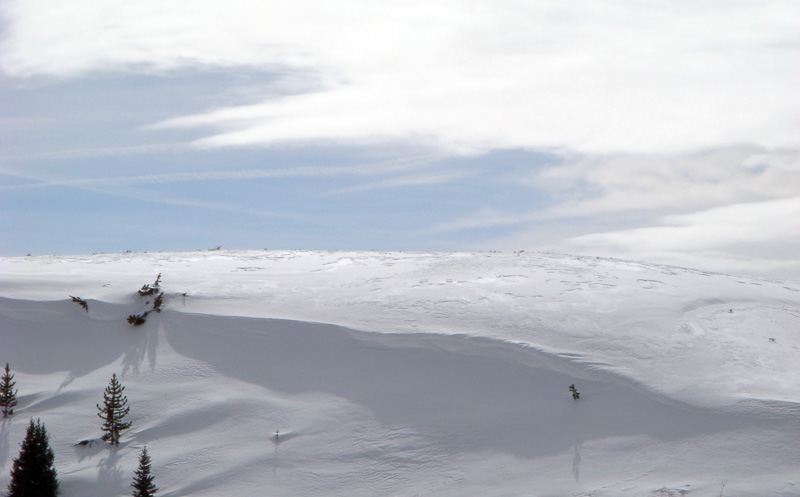
Steve H: “Erasing this world to make another one would be nuts. Making another one just like it would be cool, though. Turn Jupiter into computronium, or Mercury, and make a really hardcore Second Life.”
Rick York: “Isn’t the point of creating VR is to make it different? I love RR, but I want to bend the rules.”
Jeff: Where do you get the energy to turn conventional matter like silicon or iron into raw, unprogrammed computronium?”
Rudy: Certainly if you want to crunch up a junker world like Neptune (but what do the Neptune crystal creatures think of that?) and make a Vearth, that is less objectionable. And making a world quite different from Earth seems interesting, that’s what we do when we write novels, too.
I take objection to Stross’s notion of smashing things up to make computronium. Remember, guys, ”˜computronium’ is just a word that Charlie made up. Matter doesn’t need to be optimized for computation. It’s just that we don’t yet have the I/O, the input output.
[Correction form a late-breaking comment by Andrew Doull: “Computronium” predates Stross.]

paradoctor: “My own fantasy isn’t Vearth but Earth 2.0. Keep nature, just add to it. For instance, how about giving every cell on Earth a molecule-sized computer to use? The difference between Vearth and Earth 2.0 is that on Vearth the nanocomputers own the cells, and on Earth 2.0 the cells own the nanocomputers.”
Rudy: This is exactly the idea that underlies my ending to Postsingular and the whole underlayment of my novel Hylozoic, which I’m just finishing.

someguy: “Maybe the best explanation for plank time / length and all the other quantum weirdness is that we are in a simulated universe and we are viewing the computational limits of that simulation.”
Rudy: My friend John Walker has been talking about this, too. It’s a great SF concept. This said, I don’t see our universe as a simulation inside something else. It’s a simulation that’s simulating itself. It’s the hardware and the software.

Jason Blum: “VR will very soon fly straight past rR (with a small r.) It doesn’t need to match nature – it need only match your perception of nature, which ain’t much.”
I dunno: “All you have to do is fool the entities in the Vearth … That said, the whole concept is silly to me. I don’t get why anyone would want to.”
mahalis: “I think it’s reasonable to say that …it would be possible to set up a virtual space that was real enough.”
Rich: “There are huuuuuuuuuge amounts of detail we can’t perceive that doesn’t need to be rendered, which is computational power which can be used for other things. Like laserdragons.”
Vidar Hokstad: “We can’t predict the arrangement of individual atoms in a large object. Why would a simulation even try? If someone do point an electron microscope at an object in the simulated world, the simulator can pick any random arrangement and we wouldn’t know better.”
Sam Walker: “Quantum computing, could duplicate pretty much the whole universe in something like 10^300 fully entangled qubits.”
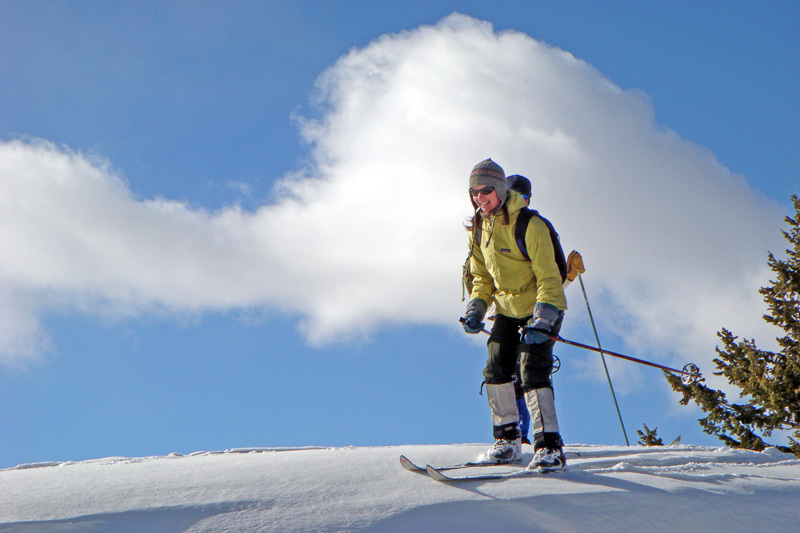
Rudy: My whole point is to wake people up to the fact that the physical, daily world is inconceivably rich. It’s something that we forget if we look at screens all the time. And I think it’s safe to say that the rulers and merchants in our society are interested in blurring this distinction. If you’re outside looking at a cloud, you’re not spending money and you’re not thinking about what the politicians are up to.
And if you really think that there is some shortcut desktop way of simulating reality in full, I’m sorry, but you’re just factually wrong. Not that 10^300 fully entangled qubits is a desktop system! That’s, like, the universe. One remark re. quantum stuff— it may very well be that quantum mechanics is just a high-level approximation, and matter is in fact infinitely, or even transfinitely, divisible.
The notion of leaving the details up to randomness is an interesting move. But maybe they aren’t random. Wolfram sometimes claims the whole kaboodle comes out of some, like, ten-bit rule that’s run for a really large number of cycles. Here’s the number of cycles that’s the thing that won’t fit on your desk.
When people talk about a substitute being “just as good,” I think of the Who song.
You think we look pretty good together
You think my shoes are made of leatherBut I’m a substitute for another guy
I look pretty tall but my heels are high
The simple things you see are all complicated
I look pretty young, but I’m just back-dated, yeahSubstitute your lies for fact
I can see right through your plastic mac
I look all white, but my dad was black
My fine looking suit is really made out of sackI was born with a plastic spoon in my mouth
…
Substitute me for him
Substitute my coke for gin
Substitute you for my mum
At least I’ll get my washing done
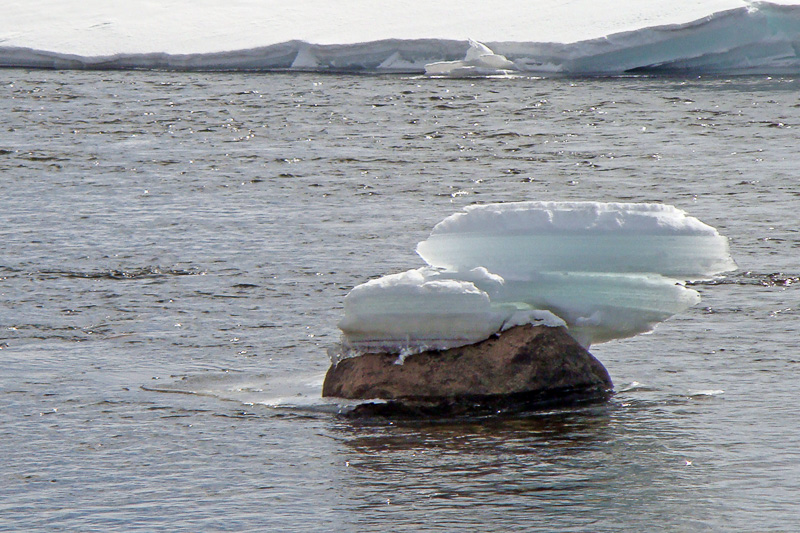
OmgWtfBBqNewFag: “What happens after the singularity level event is speculation. … My favorite is that the godlike AI computer mind could reorganize all matter in the universe and that the dimension containing our universe would recognize our universe not as an ignorant blob but something like a cute puppy.”
Rudy: The universe as a whole having a mind is a nice concept. These days I’m leaning towards the notion that the universe is larger than transfinite in size, so that there truly is no final “One” thing. There’s always a higher level.

MB: “One wouldn’t have to recreate the whole Earth, but only its surface down to a certain depth (say 100km) and then use some sufficiently realistic model for the interior. The resulting savings in material would be enormous and would allow for even more than slight inefficiencies in matter usage.”
Jeff: “There’s a lot of planetary volume that we don’t need to simulate at the atomic level. Do we really need to simulate the geophysical dynamo at the earth’s core that generates the magnetic field that creates polar auroras?”
Rudy: That’s a move worth mentioning, that you can just make a Hollow Earth replica. But this only what a computer scientist would call a linear speed-up, and it’s a logarithmic speed-up that you’d need to make computing Vearth feasible.

Anton Bijgaarden: “There is no reality out there, just interpretations, perceptions, a collective hallucination tinted by emotions and interests that we agree upon only to fulfill the practical business of living. Therefore, every reality is a virtual reality, never reaching the actual thing. … “
Auer Westinson: “ We already live in a simulation. Every one of us. We already have a simulated VR presentation of the world — running on the cybernetically feedback-looped brain wetware supercomputer. I am interested in getting to the bottom of what it is we already are experiencing—not building another simulation.”
Evan : “When you consider how rich and detailed and complex the world around us is, it’s staggering to imagine how much more so the real one must be…”
Alek Traunic: “Does the human brain already have all the software needed to create a 100% believable VR?”
Rudy: These conversations are good in that they do get us to thinking about Ultimate Reality or, maybe, the Ultimate Morass of Reality Layers. I like the notion that, since we dream convincingly, our brains can simulate reality. This said, I don’t usually see very realistic things in my dreams.

outerjoin: “Don’t forget that Vearth would actually require dev, test, and staging environments to enable all phases of the testing cycle … Post-release bugs are what we refer to as the “paranormal”, and people like Jesus are no more than test user accounts with admin rights.”
Kelson:“Do you suppose that Nature might have some sort of auto-immune response should any one part of herself start tinkering too much?”
Rudy: Some great SF ideas here. I love it. I may shamelessly use one of these…
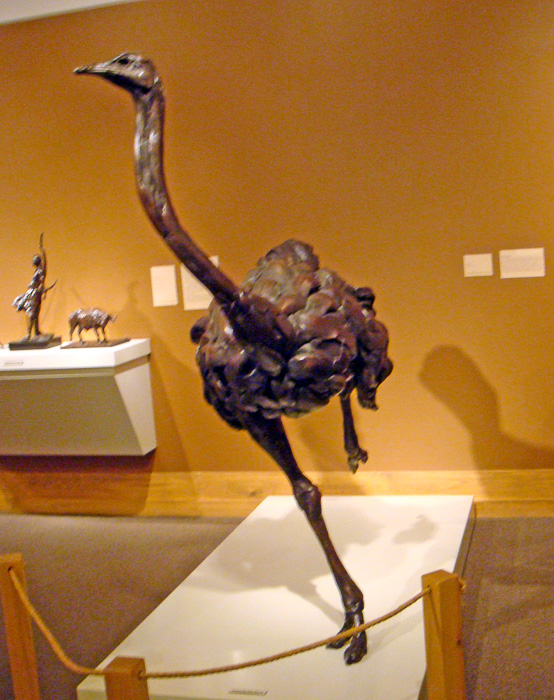
Mantissa128: “It is amazing that matter is performing computation while just sitting there, but we don’t have access to it, we have no way of making it do our bidding except by blunt force that applies to trillions of atoms. We need to get down there, have our conscious decisions exert a causative force at an atomic level.”
Sam Walker: “In the nanomachine world you describe, the advantage to replacing the blade of grass with pseudograss is that pseudograss is programmable.”
Rudy: This is a key point. As I mentioned above, I don’t think we need to go to computronium. I think matter, just as it is, does as much rich computing as we want. The catch is the I/O problem: how do we get at it? How do we hack matter?
In my novel in progress Hylozoic, the characters do it via a kind of telekinesis. They’re able to telepathically merge into an atom, say, and reprogram it. I don’t have a super-good explanation of how this works, my current one is based on some handwaving talk about unfurling the eighth dimension; I say a bit about this my Psipunk essay.
What is reality?


